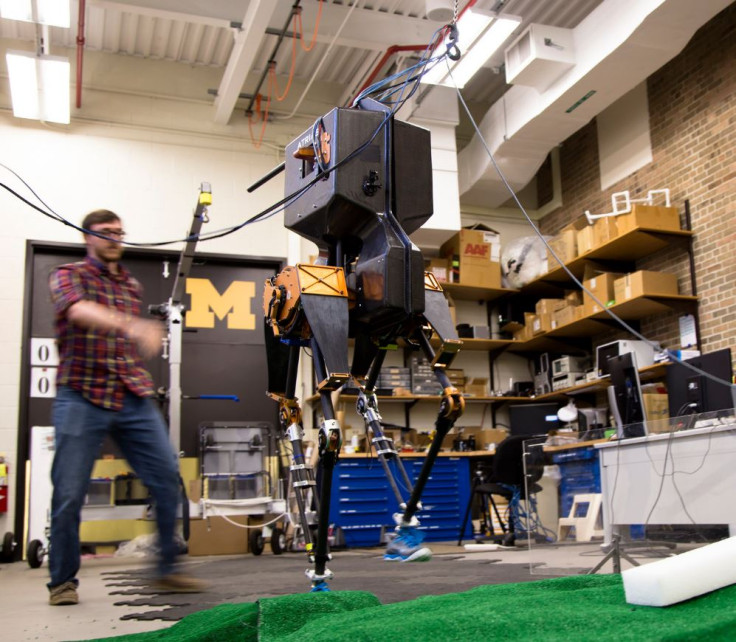This bipedal robot can walk in all directions by sensing ground height changes

A two-legged robot named Marlo has been developed such that it can walk in any direction. The 3D bipedal robot can climb steep slopes, saunter over thin layers of snow and can walk on uneven ground. The movement is known as 3D walking.
Developed by professor Jessy Grizzle –University of Michigan – and his team, the robot steps on the ground blindly and by on sensing the changes in the ground height iit can adjust its gait depending on the terrain and speed.
"The robot has no feeling in her tiny feet, but she senses the angles of her joints—for instance, her knee angles, hip angles and the rotation angle of her torso," said Jessy Grizzle, "It's like walking blindfolded and on stilts."
According to the developers, Marlo exhibits the best walking ability known for a robot, which is without powered ankles.
"Getting a robot to walk well in 3D can be a very frustrating process," said Xingye (Dennis) Da, a doctoral student in mechanical engineering, who developed a way to control robot with 2D algorithms. He created a library of 15 gaits, with each making the movement of the robot as natural as possible, to handle different kinds of walking speeds for the robot as well as ground heights.
The main controller of the robot handles its forward and backward motion, whereas the second controller handles its side-to-side balance. Da can direct Marlo about its walking speed and in what direction, though an Xbox controller.
Brent Griffin, a doctoral student in electrical engineering and computer science, is currently developing a 3D controller. The 2D robots with control algorithm can manage walking in different speeds, but an advantage of 3D controller is the optimal speed it contains. The 3D controller can slow down as well as speed up to manage walking on difficult terrain.
"We are able to design full 3D walking gaits using a mathematical model of the robot and then apply them directly to MARLO," Griffin said, "Because the implementation works without any robot-specific modifications, it is generalisable to other walking robots."
© Copyright IBTimes 2024. All rights reserved.








